Dr. Sims – Science Guru to the Pro’s
NorCal is not just a hotbed for riders. It is a center of research and development for the entrepreneurs and scientists that develop the technology that speeds up the pro peloton and is consumed by every day cyclists. Dr. Stacy Sim’s is an accomplished athlete in her own right having ridden for TIBCO, won multiple Xterra events, and her secret past as a pro tri-athlete. Her cutting edge research with athletes has led her to work with the likes of Garmin, RadioShack and Lance Armstrong where she helps riders of all abilities find the extra edge through science . Dr. Sims, or Stacy to her NorCal friends, is the go to person for to top coaches when they are looking for the extra, legal, edge.
You are one of the scientists that has contributed to some of the top cycling programs in the world (Garmin, RadioShack) what aspects of your research have been used by the pro’s?
The short answer – hydration plans and formulas, heat stress and adaptation plans, race specific and recovery nutrition, and of course thermoregulation plans have been adopted by individuals in the pro-peloton (not just Garmin and Radioshack) as well as professional Ironman athletes, USACycling women’s track program, and most recently USA Women’s Field Hockey.
Give me the long answer, I want some details for all the NorCal engineering nerds that I know read this (I’m talking about you Connelly!)
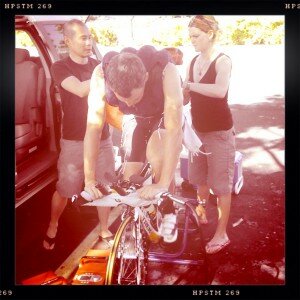 I am usually pigeon-holed into one aspect of what I know and do. At a high level I am known for my work on nutrition or thermoreg. But it is the combination of everything that allows me to go in, assess the riders situation & environment, then set up a series of in-the-field tests to get enough data to illustrate what intervention needs to be done; and the hard data to support the outcome. For example- if someone is looking to perform well in a one day classic- the limiting factor(s) will usually include hydration, thermoregulation, nutrition-the days leading up to the race as well as race day, and, depending on the rider’s physique-the specific baselayer they wear. All of these tie hand-in-hand-> the rider needs to go into a long race with a higher than normal body water content- this can come from heat and/or altitude exposure to expand total blood volume (plasma volume is the essential fluid compartment for sweating; red cell mass is essential for aerobic exercise- but you need expanded PV to keep circulation high and to allow sweat rates to meet the exercise and environmental demands), or if no time has been allocated for heat or altitude stress, going into the race “preloaded” with a high sodium beverage- with sodium comes water, and you can get a buffering effect by altering the sodium compound ingested- sodium bicarb or sodium citrate or both… Then during the race, paying attention to keeping the hydration separate from fueling needs- you can come back from low blood sugar but you can’t come back from dehydration.
I am usually pigeon-holed into one aspect of what I know and do. At a high level I am known for my work on nutrition or thermoreg. But it is the combination of everything that allows me to go in, assess the riders situation & environment, then set up a series of in-the-field tests to get enough data to illustrate what intervention needs to be done; and the hard data to support the outcome. For example- if someone is looking to perform well in a one day classic- the limiting factor(s) will usually include hydration, thermoregulation, nutrition-the days leading up to the race as well as race day, and, depending on the rider’s physique-the specific baselayer they wear. All of these tie hand-in-hand-> the rider needs to go into a long race with a higher than normal body water content- this can come from heat and/or altitude exposure to expand total blood volume (plasma volume is the essential fluid compartment for sweating; red cell mass is essential for aerobic exercise- but you need expanded PV to keep circulation high and to allow sweat rates to meet the exercise and environmental demands), or if no time has been allocated for heat or altitude stress, going into the race “preloaded” with a high sodium beverage- with sodium comes water, and you can get a buffering effect by altering the sodium compound ingested- sodium bicarb or sodium citrate or both… Then during the race, paying attention to keeping the hydration separate from fueling needs- you can come back from low blood sugar but you can’t come back from dehydration.
[Dr. Sim's hobnobbing with big shots]
And so I should go out and buy some super sharp Campagnolo artfully ripped base layer shirts?
The last of the trifecta is the clothing, esp the baselayer- I’ve done quite a bit of research on the performance properties of merino wool (see SmartWool’s website for most of the outcomes)- and merino wool tends to help thermoregulate much better than the standard technical fabrics- wool is a natural fiber and responds well to the microclimate between fabric and skin; technical fibers haven’t quite gotten there yet..
Did you meet any resistance when working with the athletes on these teams or were they receptive to doing things differently?
A few were dubious at first, but more to the fact that I’m a girl- most women aren’t on the inner circles but are more support staff or wives; not the scientist. It takes a few times of me ignoring the flirting banter for some to realize I am there as a scientist to help them get faster/get an edge. Makes me laugh actually! Almost all are very receptive though- pulling out the pee sticks usually cuts to the chase!
Say “pee stick” again… it makes me giggle.
I’m serious about the pee stick! I pull em out at every camp- people freak out then get intrigued like it’s a crystal ball- “you’re dehydrated and you went really hard in your last training session… ” then the next day it’s the first thing they ask for!
Will scientists be the next rockstars on the ProTour?
My hope is that sport scientists will have more of a presence on the ProTour, or even across sports- instead of compartmentalizing aspects of performance and outsourcing to bike companies (for fit), clothing companies, or even old school ideas (just ride on water OR ride on liquid calories…) I’d like to see more teams coming aboard the science bandwagon-to actually get the research based information for performance, rather than the marketing claims which people take for science.
You’re an entrepreneur as well, You’ve started up a venture for your hydration mix which people can learn more about your IM project at http://www.secretdrinkmix.com/. So this is taking cutting edge technology and brining it to the people. Will it help improve local athletes performance like 45 year old Cat 5 masters racers?
 So. this lends to my above comment about marketing claims which people take as science. Sports drinks are neither a good fuel nor a good hydrator-> regardless of category, you need to think of hydration in the bottle and food in the pocket. Again, you can come back from low blood sugar by eating some jelly beans or swedish fish or other quick hit sugar, but once hypohydration comes into play, you can just watch your power and race decline- it takes time to “refill” the body water compartments, and as little as a 2% body weight loss can equate to an 11% decline in VO2max- so no sprint for you if you’re dehydrated!
So. this lends to my above comment about marketing claims which people take as science. Sports drinks are neither a good fuel nor a good hydrator-> regardless of category, you need to think of hydration in the bottle and food in the pocket. Again, you can come back from low blood sugar by eating some jelly beans or swedish fish or other quick hit sugar, but once hypohydration comes into play, you can just watch your power and race decline- it takes time to “refill” the body water compartments, and as little as a 2% body weight loss can equate to an 11% decline in VO2max- so no sprint for you if you’re dehydrated!
The IM drink is one of the outcomes from my work at Garmin at the TdFrance. We formulated it to have more sodium (>300mg per serving) and just enough carbohydrate to maximize fluid absorption- the sugars used (sucrose and glucose) work to maximize fluid in and minimize GI distress. The focus is on fluid absorption, whereas the calorie needs have to come from another source (there are only 80 calories per 16oz). We also didn’t like the glow-in-the-dark colours of traditional sports drinks, so we went with freeze-dried fruit powder for flavour.
All of this plays into the slowing down dehydration and maximizing your performance.
You have a funny accent! I think you spent too long in New Zealand
Don’t be a dumbass, I know where you live.
Your passion for endurance sports seems to take your research in directions that is of extreme interest to cyclists and their equipment suppliers. Are there any topics that you are looking at now that you are looking at?
I’m just finishing up a project looking at cooling during time trial efforts to increase critical power. Very interesting results. Basically, keeping the core temp at ~38′C tends to allow for greater power output. I believe it has more to do with the temperature of the muscle and the physiology of muscle contraction/innervation rather than specific core temperature itself.
The next project I’m kind of excited about is a follow on to early work I did in New Zealand with the NZ Merino Association- I’m going to be looking at different fabrics and weaves of fabrics as baselayers. I know that merino is an interesting fiber in that it responds to the microclimate of the skin to fabric-e.g. keeps you cool when it’s hot and keeps you warm when it’s cold; but we don’t know if a silk top weave with merino will be better, or a goretex combination etc.. So, as a science geek, to use fabric to enhance the thermoreg capabilities of the body will be very interesting!
Leopard’s DC-1: tested, hammered, reviewed
Leopard DC-1 … a curmudgeon convinced
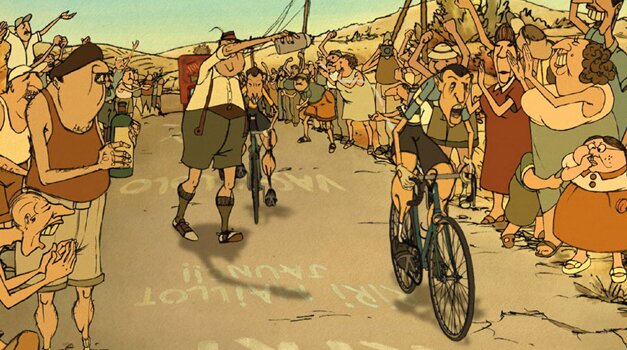 So, I’ll admit it up front ~ I’m an old-school, steel is real, kind of bike racer. I like the Merckx time trial, super spoked box rims, and the only radios at a race being used by roadside picnic’ers as they follow the race and pass the wine, arguing who has displayed the most “bon courage.”
So, I’ll admit it up front ~ I’m an old-school, steel is real, kind of bike racer. I like the Merckx time trial, super spoked box rims, and the only radios at a race being used by roadside picnic’ers as they follow the race and pass the wine, arguing who has displayed the most “bon courage.”
When the folks at Leopard Cycles asked me to review their DC-1 … I was a little hesitant. For me, the only way I can truly say I’ve got a good bearing on a bike is by racing it. And racing it hard. Honestly, I wasn’t sure if Leopard would be all that in to letting me pound around the pocked, windswept, gutterfest central valley racing circuit on one of their super-fancy carbonium rigs.
But they were fine with it … showing either a tremendous amount of confidence in their bikes, or really really deep pockets.

Either way – the Leopard DC-1 was tested hard and heavy during a couple of California’s early season March classics, the MERCO and Madera stage races. As you’ll see below, I had to mix in a bit of extracurricular activity to fully test the DC-1, but I can say that after the last few weeks of riding this thing full-throttle, I’m pretty confident in my thoughts about the bike. Thanks for reading.
- – -
Hernando’s Criteria for bike awesomeness: Handling, Traffic, & Dirt
The Leopard DC-1 is nimble and can handle the pound
 OK … I might as well start out with the weight issue. I hate admitting it ~ really hate admitting it ~ but, weight does make a difference on a bike. The Leopard DC-1 tested was decked out with SRAM Red components and a SRAM S30AL-Race wheelset.
OK … I might as well start out with the weight issue. I hate admitting it ~ really hate admitting it ~ but, weight does make a difference on a bike. The Leopard DC-1 tested was decked out with SRAM Red components and a SRAM S30AL-Race wheelset.
The bike weighed in the 15-pound range. That’s just ridiculous.
Of course, accelerating on climbs was pretty sublime with such a paper-light machine. But the power transfer of the rear triangle was also quite, quite good. You stomp on those pedals and the DC-1 jumps up a hill like somebody shot a quick cattle-prod shock to the nether regions. It really does jump. The DC-1 is efficient, it’s stiff, it moves.
But I will never sacrifice bike handling for weight. For me, whether racing or riding … the way a bike handles is of paramount concern for me. I want to feel confident and safe in a bike’s ability to carve a corner, take a beating from rough pavement … and not crack under pressure.
-
Strength & Agility
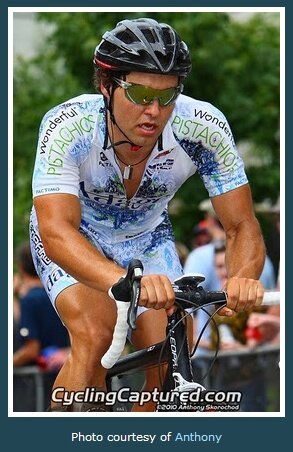 The DC-1 is a surprisingly stout frame. I mean, this is a bike that has withstood the linebacker legs of Tim Farnham crushing it all over the NRC circuit.
The DC-1 is a surprisingly stout frame. I mean, this is a bike that has withstood the linebacker legs of Tim Farnham crushing it all over the NRC circuit.
Farnham rode the DC-1 for the old Adageo pro outfit, and is still hammering away on the frame. If that featherweight carbonium bike can withstand Farnham’s massive watt’onage and outputs of beef’ocity … it can handle anything.
Both the MERCO and Madera races had stages with bumpy, technical, and butt-busting aspects to them. The MERCO criterium had a 180-degree hairpin that sent you diving and dodging as riders entered the turn, and then kickied an almost standing start up to 35mph in a short few hundred meters. That was a good test of the DC-1′s handling abilities.
I did the 35+ and p1/2 crits at MERCO, which ended up shooting me about 90 times through that stupid hairpin. And, I have to admit … the DC-1 took to it like a shark. The bike is designed to distribute a rider’s weight very well. I felt a solid connection with the bike – in control and able to throw the bike in any direction I needed to dodge wheels or boys sliding out.
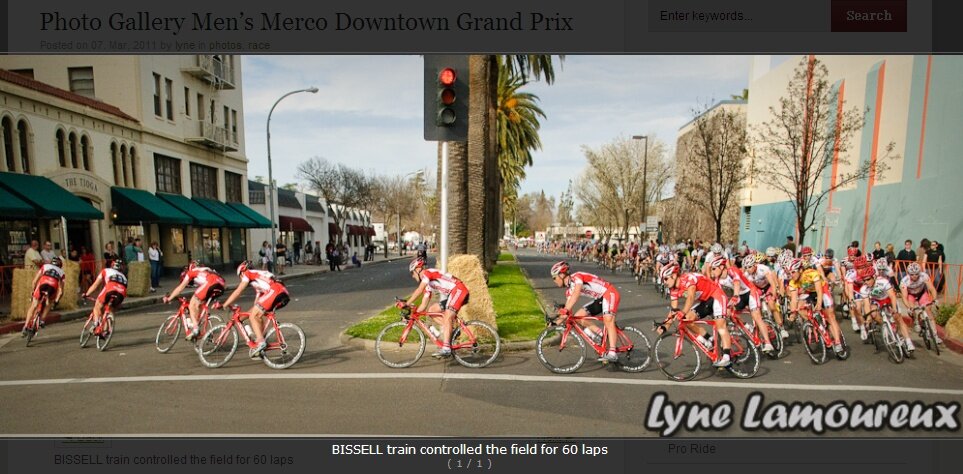
Both the Madera and MERCO road races had sections of road that were bumpified with cragly central valley pavement and splayed open with potholes galore. Madera was probably the most butt-busting road race I tested the DC-1 on ~ as the backside of their course was a cow-country ghetto version of a Paris-Roubaix. There weren’t any cobbles … just a whole lot of empty-budget road disrepair.
The DC-1 really did absorb the barrage of bumps and potholes with efficiency and comfort. Honestly, I was kind of shocked. I’ve ridden that Madera course on steel, carbon, and even an aluminum frame once. But I’ve got to say – the DC-1 was the strongest I’ve hit through that stupid road. The power transfer was constant and I was able to float over the Roubaix-light roads with an evil grin on my face.
Light, durable and nimble? I hate technology.
-
The real test … TRAFFIC and Off-Road
 After all the years of racing and riding ~ I rarely do any group rides nowadays. It’s not that I’m anti-social … it’s just that I like my training to be specific and targeted. But there are benefits of doing group rides … you get to work on your speed and handling skills. So for me ~ I replace group rides with … traffic and dirt.
After all the years of racing and riding ~ I rarely do any group rides nowadays. It’s not that I’m anti-social … it’s just that I like my training to be specific and targeted. But there are benefits of doing group rides … you get to work on your speed and handling skills. So for me ~ I replace group rides with … traffic and dirt.
I live in Oakland. And I’ll admit that racing cars around O-town is about as stupid and dangerous a thing as one could do outside of enlisting for Afghanistan. But I love it. I’m a street junkie. I love the hard accelerations of merging into traffic, the adrenaline surges of keeping pace and changing speeds, the overloads to the legs of matching velocity, and the constant need for awareness and decision making.
That’s why I’m always smiling in crits … they’re so much less stressful than training.
I’m sure the folks at Leopard Cycles don’t want to know that I took their uber-ka-ching bike out to fight amongst the gangsteryuppies of Oakland and Berzerkely … but, the reason I’m writing about it is to confirm that the DC-1 did what it should have … it responded under me like an unconscious extension of my body, it freed up my mind to play safely and fiercely in traffic. Is it geometry? Is it carbon modulusness?
I don’t know. All I know is, the bike worked. The bike worked very, very well.
-
 My other true-blood testing ground is pushing a road bike through the rigors and mayhem of dirt. Now I KNOW the Leopard folks won’t like hearing this, but after the Madera Criterium – I rode over to the afternoon TT course in Chowchilla and ‘accidentally’ got lost out in the dirt roads and cow pastures of rural’opia.
My other true-blood testing ground is pushing a road bike through the rigors and mayhem of dirt. Now I KNOW the Leopard folks won’t like hearing this, but after the Madera Criterium – I rode over to the afternoon TT course in Chowchilla and ‘accidentally’ got lost out in the dirt roads and cow pastures of rural’opia.
It was awwweeeesome.
I pushed the DC-1 through some seriously rutted and rain rampaged third-world jeep tracks. I pounded that bike like it was a hate-crime over a bunch of pocked, chunky fallow fields ~ spraying a rooster-tail of clods and weedwackery behind me like a gap-toothed hick doing donuts in his F250.
Oh man … I know writing about this has probably just scratched me off Leopard Cycles test riding list forever … but it was just soooo much fun.
-
In Conclusion …
I’m sold on the Leopard DC-1. I might as well not beat around the bush – I think they have a superior product on their hands. It’s been tested by both men and women’s professional teams and did nothing but purr underneath me for the weeks that I tortured it.
It’s super light, has proven durability, and is intelligently designed to allow for quick handling, efficient power transfer, and vicious accelerations. It’s not rocket science … it just works.
Check out the Leopards they’ve got in stock at Cycle Path in San Mateo.
- – - – -
Social Networking For Results
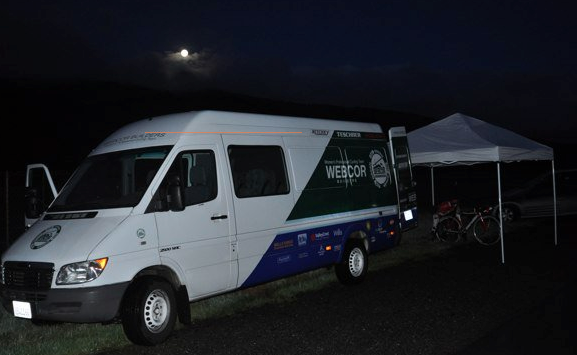 As we watch the PRE SEASON close with some epic rainy cold Belgian style weather and wait for the stories of torture to roll in from Beat The Clock and Cantuna Creek i figured it was a good time to put out a few “Social Network” type of suggestions.
As we watch the PRE SEASON close with some epic rainy cold Belgian style weather and wait for the stories of torture to roll in from Beat The Clock and Cantuna Creek i figured it was a good time to put out a few “Social Network” type of suggestions.
NUMBER 1. Like NorCal Cycling News on Facebook
if you are an avid Facebook user following our Fanpage is an easy way to stay on top of recent posts.
NUMBER 2. Follow Us on Twitter
Hernando hates the word “tweet” so he won’t touch this but we do have news going out this way too.
NUMBER 3. Tag Race Info in Twitter
Here is the real use for twitter, real time race coverage and results. Eventually we’ll have some t-shirts and schwag to give out for folks tagging race info in twitter. What does this mean? If you send an update to twitter and include a hashtag, which means the # symbol, it makes it easier to find info. So.. if you are at the Beat The Clock TT, and you send an update to twitter like
“Crappy day to TT! Rain, Sleet, and Snow. Still got under 22 mins. #btc #nccn”
we can all find the race a little easier. Below are some suggestions for tags to use.
- [race name]# – ex. cherrypie#
- nccn#
- ncnca#
- norcal#
- norcalrr#
-
We will try to guide some hashtags in the upcoming races to see if people pick it up at all. Sunday would be a great time for it. Use #pineflat or #nccn and if you are good little racers all kinds of results will pop up and we can then spread the good word through our esteemed website!
Nerd Alert – iPhone App for Hellyer-Ites
Keirin and sprint specialist, and hard core Hellyer-ite, Gio Rey has put out a few track specific apps that are awesome if riding the boards is your thing. We need more stuff like this since we are Silicon Valley and all. Strava, MetriGear, all are out of here but there should be tons … NorCal should be leading on the innovation front in exercise technology.

For starters check out the Velodrome GearCalc – a gear calculator that will help determine gear inches. Most of the calculators out there are made for fixie hipsters who want to measure skid marks (heh heh) rather than figure out the perfect gear ratio. This once is going to be free for a few days so get on it.
Details
- The gear chart you always wish you had. Simple, Fast, Easy
- Calculates both the precise and the “standard” gear inches for all common chainring, cog, tire width combinations.
- Calculates pacing information given cadence for common distances using the selected gear.
-
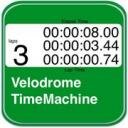
I once failed to get a friends time right at Hellyer when he was doing his practice starts. I don’t know what i was thinking, but he was surely pissed. There were just so many buttons on the damn stop watch. It was a demanding piece of equipment. This over ever… well, it’s simple and it will email you the results. This one is not free… probably cause it’s way to useful.
Details
- A sophisticated stopwatch for iPhone.
- Overcomes the input limitations of the touch screen
- Integrated immediate emailing of results and split times
- Optionally calculates speed and cadence for every lap
- Searchable log book of previous runs
- Optional 5-beep countdown to start
- Lap up/down counting modes.

